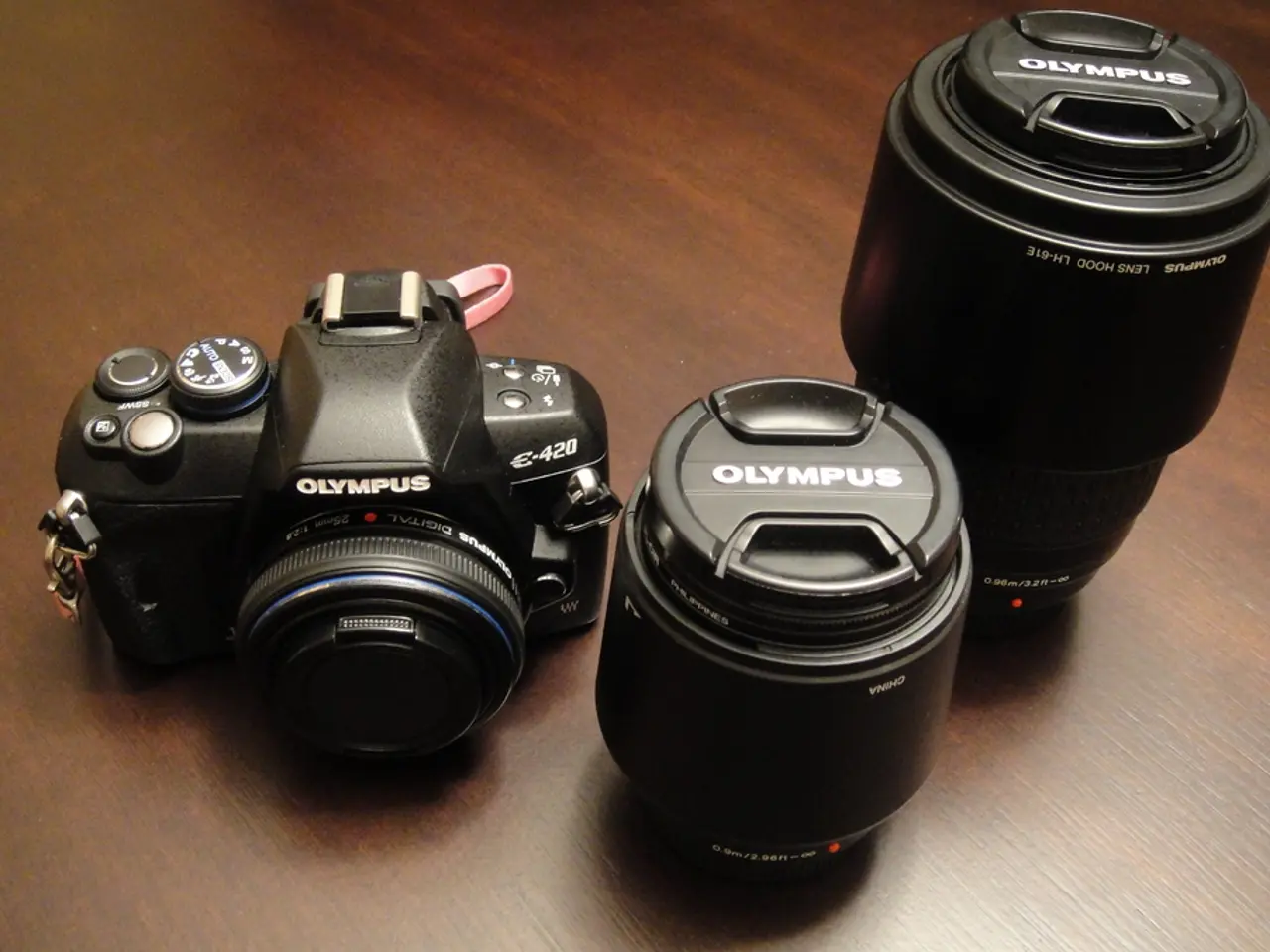Wide-Angle Lens Accessories: Dome Ports and Diopters for Expansive Viewing
In the realm of underwater photography, two essential tools are diopters and wide angle conversion ports. Let's delve into these components and their role in capturing stunning underwater images.
Diopters, often referred to as close up lenses, are additional lens elements placed behind a dome port. Their primary function is to modify the focusing ability of rectilinear wide-angle lenses, particularly by reducing their minimum focusing distance. This effect is similar to adding a close-up lens that helps the lens overcome the increased focusing distance caused by the dome port's refraction underwater.
One key effect of using a diopter is the shortening of the minimum focusing distance. Rectilinear wide-angle lenses, when used behind dome ports, often have limits on how close they can focus due to optical path changes and refraction underwater. Adding a diopter lens compensates for this, enabling closer focus and improved macro-like capabilities even with wide-angle lenses. However, it's essential to note that this technique may cause changes in sharpness, field of view, or slight distortion near the edges due to the additional lens element in the optical path.
Wide angle conversion ports, on the other hand, are a combination of a lens and a port, developed by Nauticam. These ports are the best option for underwater wide-angle optics when paired with a rectilinear wide-angle lens. They offer the advantage of "through the lens focusing" and water contact optics, ensuring sharp and clear images.
When it comes to materials, glass dome ports are heavier and more expensive than acrylic ones. They are, however, more scratch-resistant and believed to shed water easier for over-under shots. Acrylic ports can have minor scratches that can be "meshed out," but they are less resistant to scratches compared to glass ports.
It's worth mentioning that some wide-angle lenses do not require a diopter, especially when using an 8-inch dome port or larger, as these lenses can focus ten inches away or closer. For fisheye lenses, diopters do not provide any benefit.
In practice, many rectilinear lenses will have improved performance with a +2 or +4 diopter. The virtual image in underwater photography, using wide-angle lenses, is a focus point that lies approximately 1.5 times the dome diameter away from the dome port.
An example of successful underwater photography is the angle shark photo in this article, which was taken with a Tokina 10-17mm fisheye lens, an acrylic S&S 6-inch dome port, and was shot at F13 to ensure sharpness in the corners and rear of the fish.
Lastly, if you are using a compact camera, you may have to use macro mode with a dome port or your photos will be out of focus. The housing manufacturer or housing dealer can usually recommend the proper extension/diopter combination for your dome port and lens.
- Diopters, placed behind a dome port, modify the focusing ability of wide-angle lenses, reducing their minimum focusing distance.
- In underwater photography, changes in sharpness, field of view, or distortion may occur after adding a diopter lens due to the additional lens element.
- Wide angle conversion ports, made of a combination of a lens and a port, are ideal for underwater wide-angle optics with rectilinear wide-angle lenses.
- For close-up or macro-like capabilities with wide-angle lenses, using a diopter can shorten the minimum focusing distance (MFD).
- Acrylic dome ports are less expensive and lighter than glass dome ports, but they are more prone to scratches compared to glass ones.
- Without a diopter, some wide-angle lenses, such as those with an 8-inch dome port or larger, may not require it to focus ten inches away or closer.
- When capturing stunning underwater images, it's crucial to consider the influence of diopters and wide angle conversion ports on the final composition, such as the angle shark photo in the article, taken using a fisheye lens and an acrylic dome port.
- If using a compact camera for underwater photography, it's essential to switch to macro mode when using a dome port, or images will be out of focus.




